Introduction
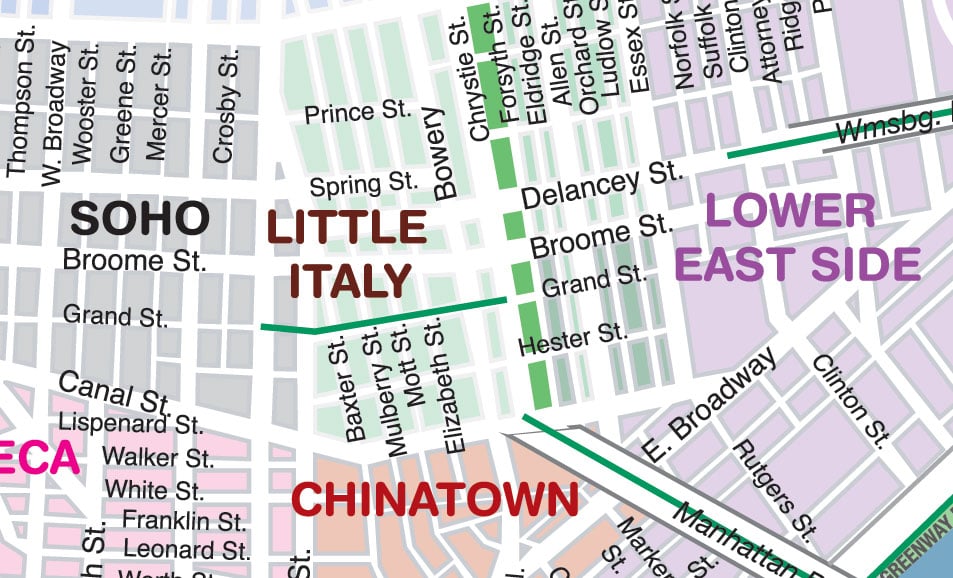
SoHo is one of the famous and well-known districts of New York, which experienced its fast growth, peak, transformation into one of the most recognized symbols of the city, and intensive commercialization. It is bounded to the north by Houston Street, to the east by Crosby Street, to the south by Canal Street, and to the west by Sixth Avenues (see Figure 1).
Discussion
The area acquired its name due to Chester Rapkin, an urban planner and the author of Rapkin Report, who first used the term SoHo as the abbreviation for South of Houston Street (Ranney 26). The title became similar to Soho, a famous area in London, and became popular among residents. Today, SoHo features modern galleries to match independent-designer stations and luxury boutiques characterizing the area. After the retail therapy, visitors can have a meal in one of the excellent restaurants in the neighborhood. Designer shops, high-end art exhibitions, and luxury chain stores make SoHo a popular shopping destination for visitors from other cities. The location is famous for its beautiful cobblestone walkways and cast-iron facades. However, it is also an evocative background for trendy crowds congregating at high-end restaurants and nightlife venues.
Natural topographical constraints, especially Collect Pond and the stream that traveled to the Hudson River, which is today’s Canal Street, confined in the eighteenth-Century urban expansion to the south, and the SoHo region remained farmland throughout. However, as far as the country evolved, the area acquired new peculiarities. In the early 1800s, the region was a commercial center for wealthy New Yorkers (Ward). Through the mid-century, although Broadway was the “Fifth Avenue” of the day, whorehouses began to spring up on side roads, and the region now known as SoHo became New York’s initial red-light district.
The further development of the country and the city also impacted the district and its appearance. The Industrial Revolution transformed SoHo into an industrial neighborhood with specific features, such as street manufacturers and local industries (Ward). The area’s appearance also altered, and it acquired features typical for the industrial era (see Figure 2).
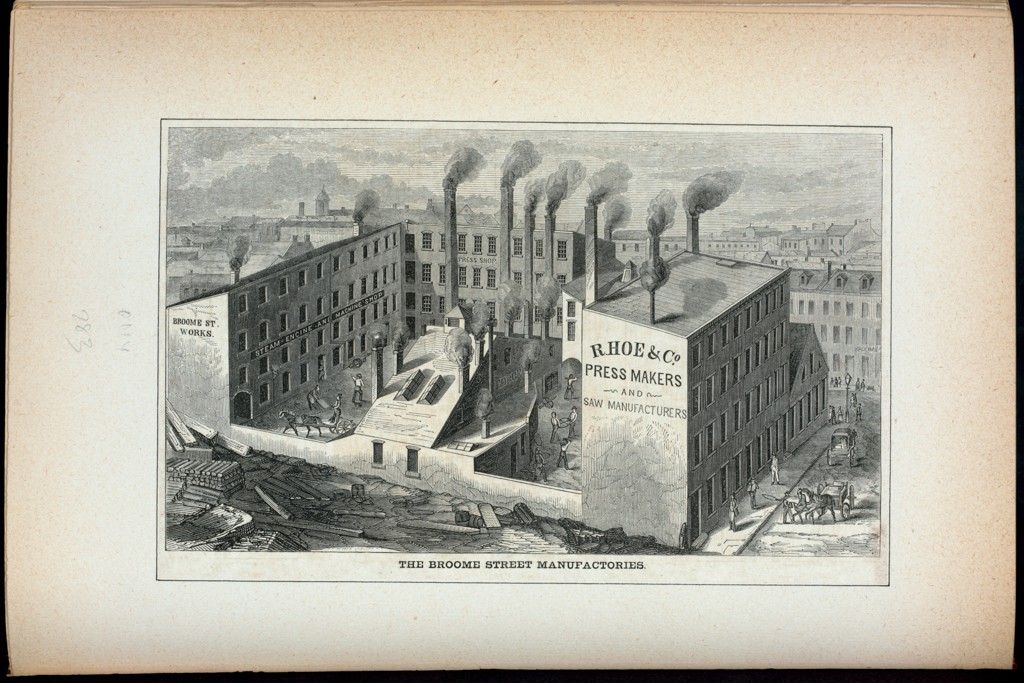
During the nineteenth century, more individuals in New York City, particularly the rich and middle class, began to migrate northward on the island. It was explained by the revitalization of the economy, more chances to earn money, and the mood of the epoch, stimulating moving to new areas to find a better living (Ward). The once-rich location scattered, and the region became a commercial and industrial hub. It became one of the crucial periods of the area’s development and further transformation.
Thus, the demographics of the region continued to change because of external factors. During this period, the population in SoHo fell as many individuals went north (Ward). This tendency was important for the further transformation of the district and its acquiring new characteristics. It also opened the area to companies and corporations, and SoHo immediately became a manufacturing hub for the dry goods and mercantile sectors. During the nineteenth century, the area was crowded with enterprises and industries at every corner, with shops and stores everywhere (Ranney 8).
Furthermore, most of the firms and industries established in SoHo would survive until the early 1960s (Ranney 9). Following the Civil War, an entertainment and commercial center in New York began to move uptown to Union Square, which is the current Times Square (Ranney 95). The manufacturing industry began to move into the region and stayed until about the 1950s (Ranney 13). These factors led to the appearance of specific features, such as the construction of numerous cast-iron buildings, making SoHo one of the recognizable neighborhoods of New York.
Thus, the SoHo Cast-Iron District is the world’s most extensive collection of entire cast-iron structures. The construction process revolutionized the landscape of New York in the 1800s, resulting in some of the most stunning designs. The simplicity of fabrication and the peculiarities of taste at that period made wrought iron the most common construction material (Ranney 15). Moreover, it was chosen since it was more substantial compared to cast iron (Kaufman and Briant 23).
Every time wrought iron is melted and worked, it gains strength. Wrought iron is frequently utilized in commercial products due to its strength. (Kaufman and Briant 23). The technology quickly acquired favor in the production of ornamental architectural features, as well as critical elements like beams and columns (Kaufman and Briant 23). Speaking about SoHo, the manufacturing brought to the area during the times of the Civil War contributed to the emergence of numerous cast-iron buildings (Ward). For instance, EV Haughwout Building, built in 1857, can be seen today and remains one of the distinctive features of SoHo and the cast-iron era (see Figure 3).
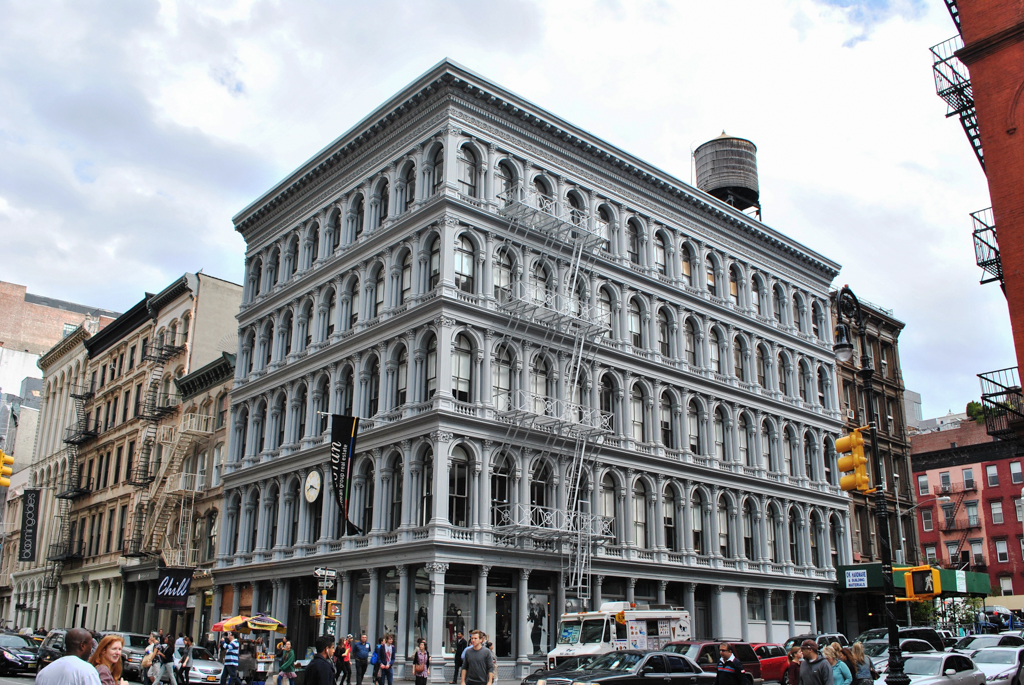
However, along with the attractive appearance, the building turned out to be dangerous. If a fire occurs, the cast iron can cool rapidly, causing damage to the surroundings and leading to the collapse of the building (Ward). Thus, a chain of tragedies and fires associated with cast-iron buildings resulted in the emergence of the new name “Hell’s Hundred Acres” (Ward). It stimulated the further depopulation of the area and the industry’s replacement in other regions. Vast buildings were empty, which attracted the attention of a new group of people looking for space to do their business.
In such a way, during that period, signs of radical change were observed. The first group of artists looking for ample space started to move into spacious and empty places left by previous owners (Ranney 28). It indicated the beginning of a new era critical for the further evolution of SoHo and its transformation into one of the recognizable areas of New York. Throughout the 1960s, artists unlawfully inhabited commercially designated sites in SoHo (Ranney 28). The low rent attracted this category as its representatives looked for new options for them to act and continue their careers.
Most local constructions acquired a chance for a new life. Vast and empty buildings, previously utilized for commercial purposes, were large enough for artists to perform their business (Kaufman). However, they faced resistance from the owners who wanted to initiate the eviction procedure to ensure they acquired rent or could offer the buildings to other groups (Ranney 29). It complicated the position of newcomers and contributed to their collaboration and unification. In response to the claims mentioned above, SoHo artists formed alliances in the early 1960s, one of which was the Artists Tenant Association (ATA) (Ranney 10). The group of approximately 500 artists was formed to oppose the city’s policy on eviction by refusing to exhibit their work in New York City galleries until the policy was relaxed (Ranney 11). It demonstrated the topicality of the problem and attracted public attention to SoHo’s district.
As previously said, the lofts where artists would live in SoHo were considerably more significant than other residential districts. It became one of the central factors which immensely helped the artists to succeed because their work required a considerable amount of room (Slotnik). However, by the start of the 1970s, these vast lofts in SoHo were attracting more than simply artists (Slotnik). People looking for a place to live in New York City in the early 1970s moved to SoHo (Slotnik). They considered the lofts trendy and sophisticated, in contrast to the artists who utilized the enormous areas for work. Due to the influence of these two groups, the image and appearance of the neighborhood started to alter. SoHo was transformed from an industrialized region controlled primarily by manufacturers and enterprises into a commercialized district that was visually pleasing.
During that period, the neighborhood also acquired its famous name, which resonates with Soho in London, another fashionable district. As stated previously, the region was given the title “SoHo” in 1963 by city planner Chester Rapkin, who coined the word to represent the South of Houston in a municipal planning study (Ranney 26). The report was released about the same time that preservationists, resident artists, and civic leaders fought off the infamous Lower Manhattan Expressway strategy by Robert Moses (Ranney 26). It would have decimated SoHo and many other downtown neighborhoods by connecting the Williamsburg Bridges and Manhattan to the Holland Tunnel (Ranney 26). After the report’s release, the name became popular and is used nowadays by local residents and newcomers.
As a result of these developments, numerous radical changes emerged. First of all, the living costs in this region increased to levels that have never been seen here previously (Ranney 7). Around 1973, the whole ambiance of SoHo had altered, and boutiques had become a mainstay of area 8. Retail establishments quickly exploited the basement floors of industrial structures (Slotnik). The constructions peculiar to the cast-iron area started to attract tourists and potential clients who acquired a chance to spend money in local shops and restaurants. SoHo entered a new phase of its fast development.
Nowadays, SoHo is a popular destination for travelers to the city, owing to the abundance of shops, food, and history. Thousands of individuals arrive in the area to walk its streets daily (see Figure 4).
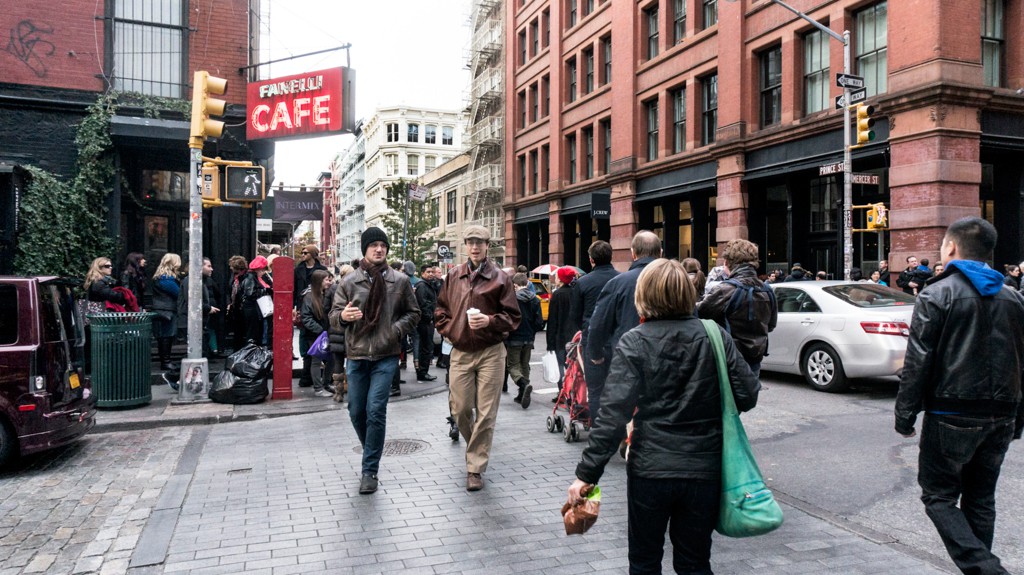
Currently, there are numerous must-see attractions in SoHo for visitors, such as Broadway, the Historic District that spans the whole neighborhood (see Figure 5).
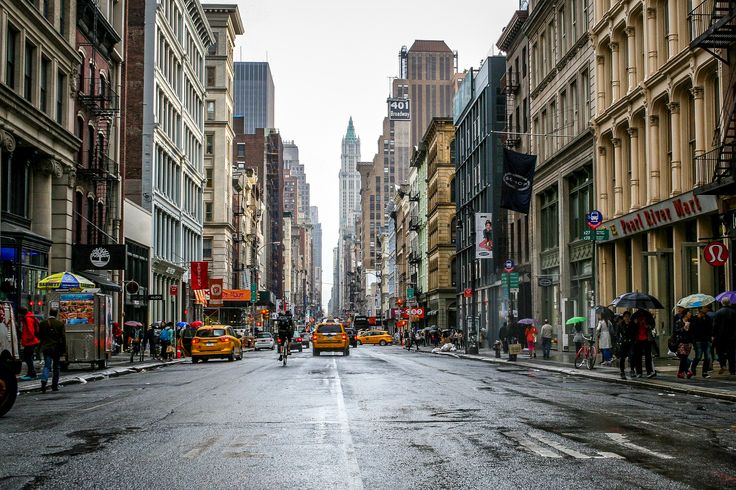
Moreover, individuals might attend the famous old-time Fanelli’s Café, which is one of the oldest in New York (see Figure 6).
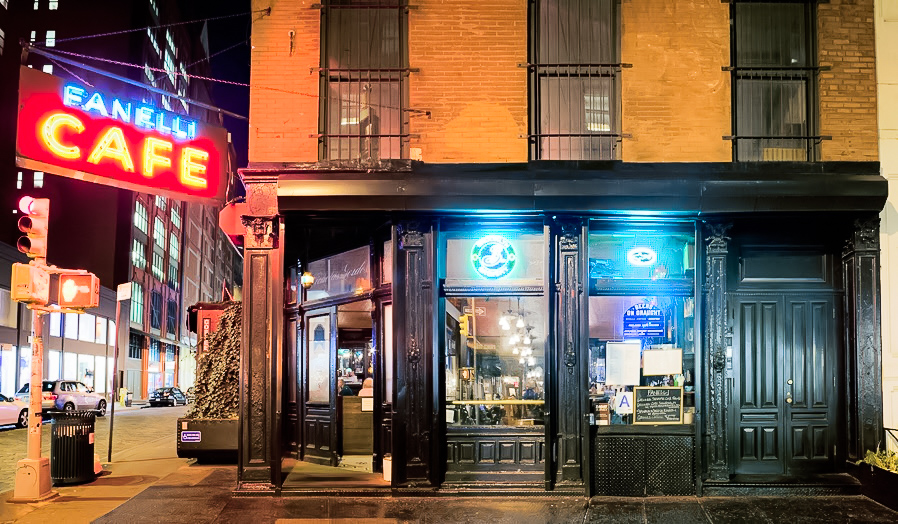
SoHo’s primary shopping grid extends from Broadway West to Sixth Avenue and starts from Houston Street South to Canal Street. Broadway represents the leading commercialized street in SoHo. After seeing it, visitors may delve into the history of SoHo. The New York City Landmarks Preservation Commission classified SoHo as a historic area in 1973 (Ranney 2). Around 500 buildings in the SoHo locality have industrial-style cast-iron façade (Ranney 2). These structures will be visible to visitors who merely walk about the region. Inhabitants found solace in the place throughout the 1970s, while SoHo was becoming more commercialized because numerous cafes and shops have been operating here for a long time (Ranney 4).
It indicates that SoHo is transforming, and while some establishments, such as Fanelli’s, remain the same, others lose their unique identity. It is one of the significant problems of the region nowadays.
The future SoHo will use the strength of its thriving commercial sector to support the community’s arts culture while promoting a larger agenda for growth, change, and transition in a way that enhances the quality and character of the place. However, there are also fears that the region will lose its unique identity because of its commercialization. Artists are leaving the area because of the high prices, which causes a negative impact on its future and unique image. Under these conditions, there is a critical need for compromise, helping to find the balance between the further commercialization and preservation of the area’s unique identity.
Conclusion
Altogether, SoHo is one of the most recognized neighborhoods in New York City. It has an unusual history as the region witnessed the industrial revolution, the development of manufacturers, the cast-iron era, and the income of artists. Nowadays, it remains of the fashionable areas in New York; however, it faces a high risk of fading. It has turned into an open-air mall with numerous attractions for shoppers and tourists. At the same time, the high rent made artists leave Soho, which altered its soul. If the tendency is preserved, the region can lose its distinctive identity and transform into another area full of shops, malls, and cafes. That is why there is a need for a new stimulus for the area’s spiritual development and finding the balance between commerce and other attractions that might help to support the region’s exceptional reputation and create the basis for the new stage of its development.
Work Cited
“Haughwout Building.” Sah-Archipedia. Web.
Kaufman, Brett and Clyde Briant. Metallurgical Design and Industry: Prehistory to the Space Age. Springer, 2018.
Kaufman, Carly. “The 6 Best Shopping Districts in NYC.” Citysignal, 2022. Web.
Lemer, Ali, et al. Lonely Planet New York City. Lonely Planet, 2022.
O’Hara, Sandy. “Broadway in Soho.” Pinterest. Web.
Ranney, Susie. SoHo: Beyond Boutiques and Cast Iron: The Significance, Legacy, and Preservation of the Pioneering Artist Community’s Cultural Heritage. 2012. Columbia University, Masters Thesis.
“The Second Oldest Food Drink Establishment In New York City.” Piccola New Yorker, 2019. Web.
Slotnik, Daniel. “The Future of Wealthy SoHo.” The New York Times. 2020. Web.
Ward, Peter. “SoHo’s Journey from Hell’s Hundred Acres to an Artistic Haven.” The Culture Trip. 2019. Web.